Artist Journal - PLANeT - a series of photosynthetic works - © Lloyd Godman
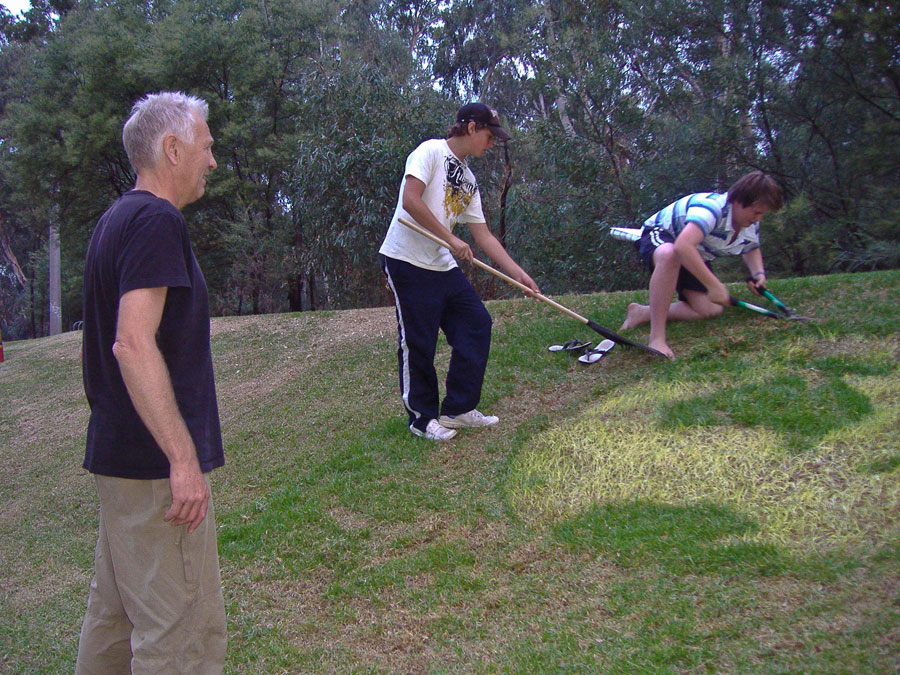
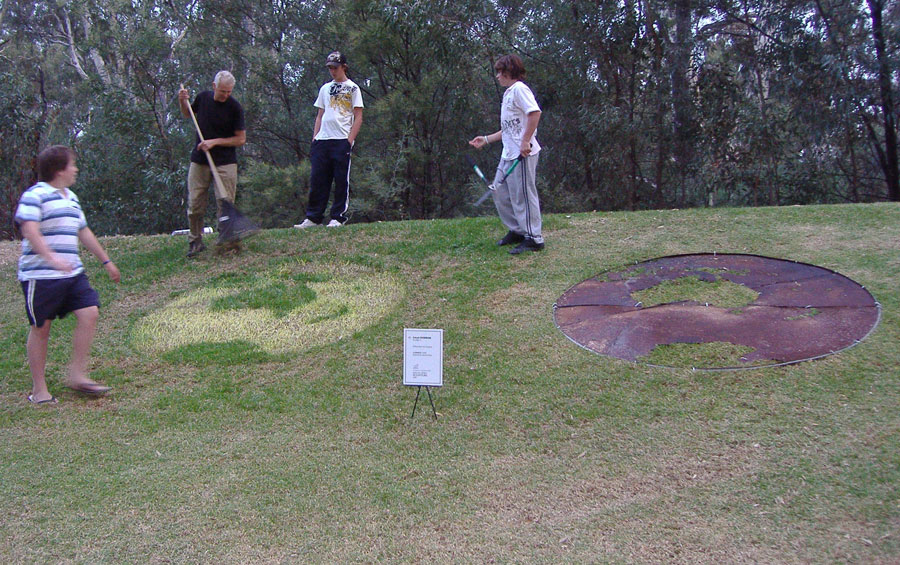
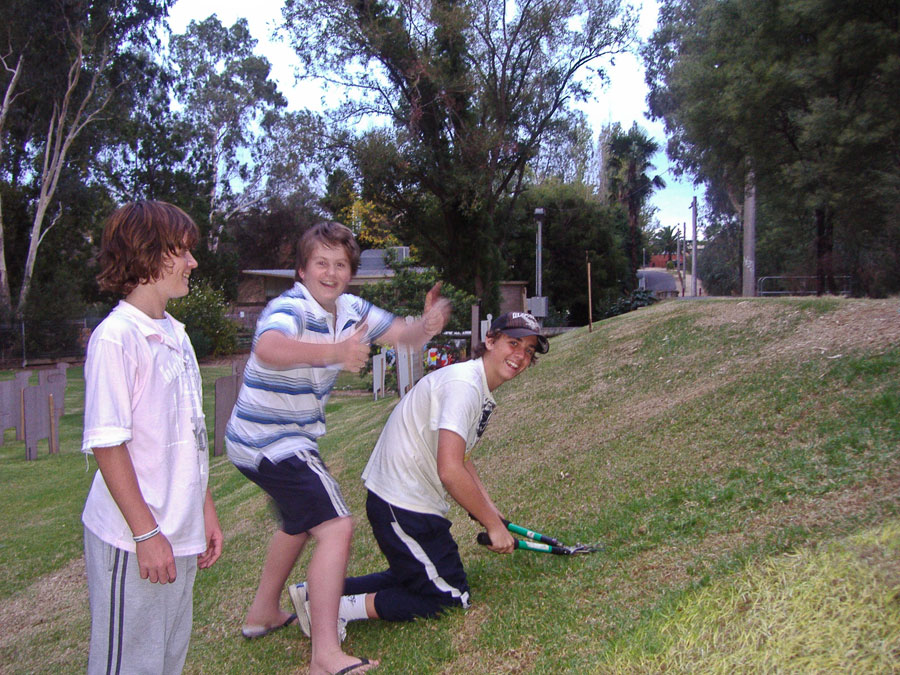
When
it comes to working with grass and photosynthesis, the artist I admire most are Heather
Ackroyd and Dan Harvey. Their work is simply fantastic. I was fortunate
to meet them in New Zealand around 1997, and I wrote to them sometime
after to let them know of my work with Bromeliads - They suggested they had talked over the idea of working the way
I was with Bromeliads but had never got around to it. They were
encouraging of the work I was doing - so I always felt that grass
was their domain and Bromeliads mine.
However, the first year in Australia impressed on me the heat and
dryness of the land, compared to New Zealand there is a huge difference.
At the height of summer, the council announced a hard rubbish collection
in our area. We dutifully collected up much of the junk that had
been accumulated over many years to the road side for collection.
Among the rubbish were the lids of several old corrugated water
storage tanks. As the truck came up the road to collect the rubbish
it suddenly hit me how beautiful the rust patina of the tank lid
was with its circular form. I reclaimed them all from the road side
and dragged them back into the property at the Bladessin
Press.
They
sat on the ground for several weeks before the circular shape suggested
a globe - a map of the earth. It brought back memories of the Planet work exhibited in Gallery 101. I wondered what was the global perspective
of the planet with Melbourne in the center. With google earth its
is possible to see the planet from any perspective and yet we are
so conditioned to a few standard view points of the planet.
From
these view points, living in Australia and New Zealand we are conditioned
to look upwards and outwards to Europe , Asia, or the USA. Its surprising
how many maps of the world cut 20 to 30° off the bottom, where
the antarctic is, which lowers the position of the equator and gives
a false perspective of the world.
This
Tank lid Globe is drawn with Melbourne at the centre - the dry continent
is surrounded by water. The Southern ocean, the Pacific and the
Indian ocean dominate, hold it centred like a frame. There is no
Europe, North or South America - South Africa disappears along with
the Middle East and most of Asia. Its a challenging perspective.
I
drew this perspective on to the tank lid and cut it out with a pair
of tin snips and a grinder. From here the idea occurred to lay it
on the ground and let the grass grow through. This led to the work Planet II.
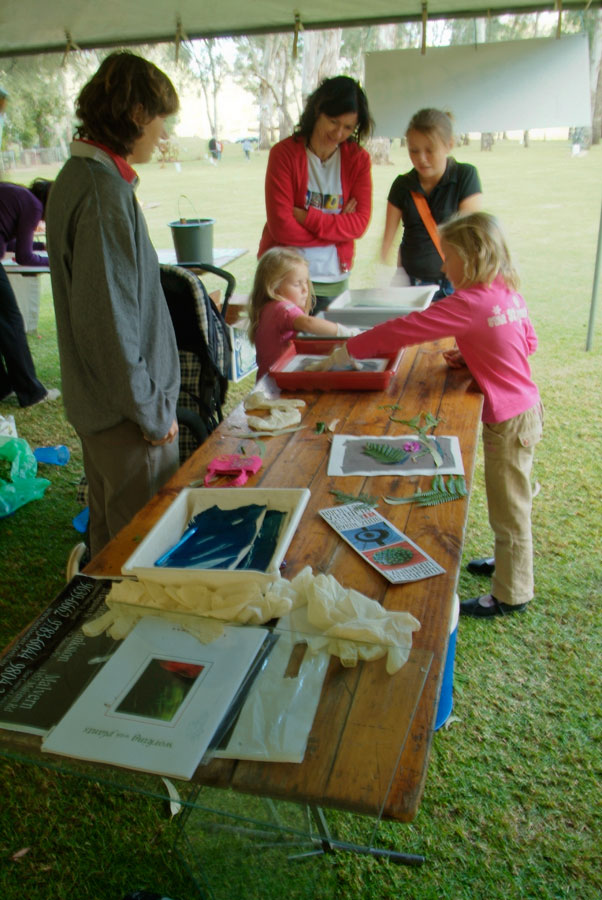
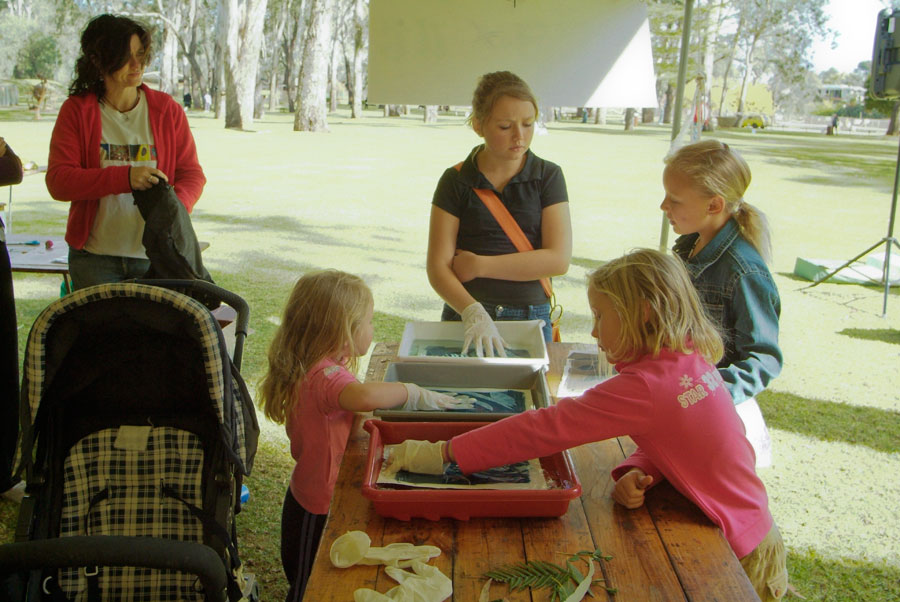
For
the open studio at the Baldessin press in 2006 the work was suspended
between a series of trees.

A
map of the globe from Lyon France from a european perspective. |

A
map of the Globe from Lille, France
|
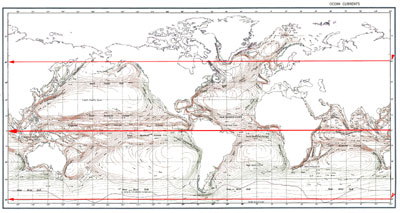
A map of the ocean surface currents illustrates how often the lower
20 - 30° is left off the map of the world.
In
spring we watched the movie Jean de Florette by Claude Berri based
with Gerard Depardieu as Jeanon the novel by Marcel Pagnol deals
with how essential water is to plants. Establishing our orchard
and vegetable garden during the extreme drought of 2005- 2006 in
Australia was a challenge. Friends, like Ross and Wendy Mather who
had won awards for their sustainable garden and had been gardening
in the area for 20 - 30 years had nearly all abandoned there gardens
through lack of water during this time. To much of Australia, Climate
change suddenly became real with politicians beginning to give it
some credibility and attention.
For
the Yering Station sculpture awards I exhibited Planet
IV . The work extended the map motif into the shape of a 3mm
thick steel dish which projected upwards at an angle of about 60°.
I cut the map in the dish with a plasma cutter. I used the tank
lid to grow an image on the grass and placed the dish so, its shadow
and the image on the grass would all interact as the sun moved across
the sky. This aspect of the work where the traverse of the sun played
a role related to the Summer
Solstice series of works.
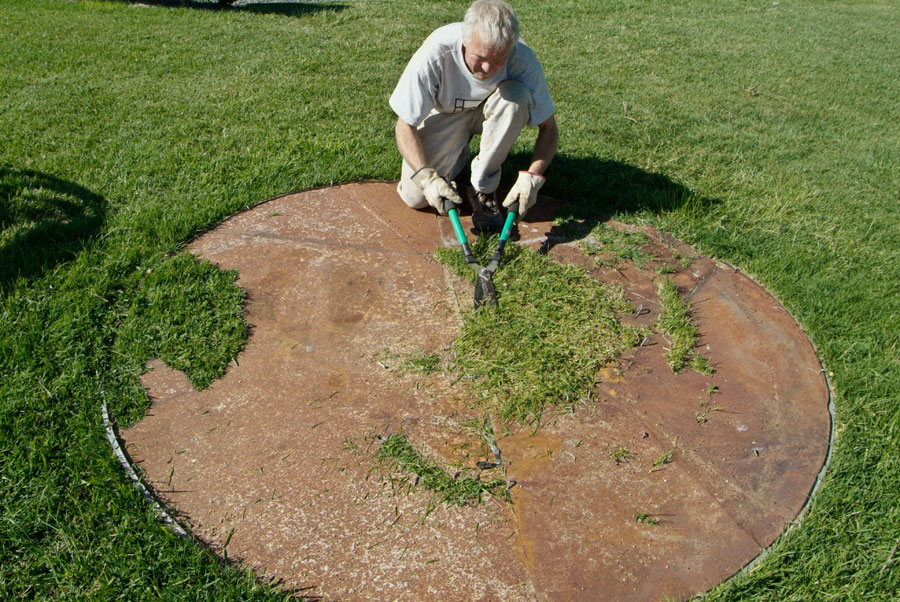
This laying of material on grass to form an image continued in the
work LEAF 2007
|